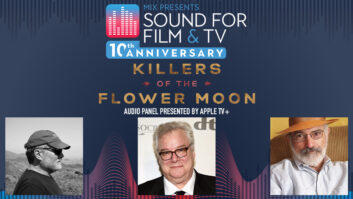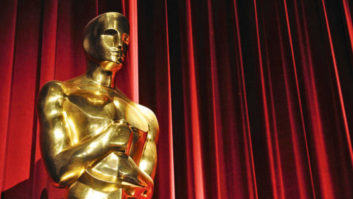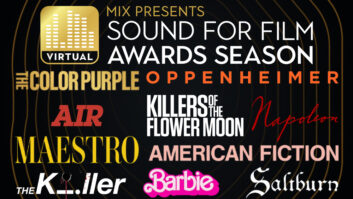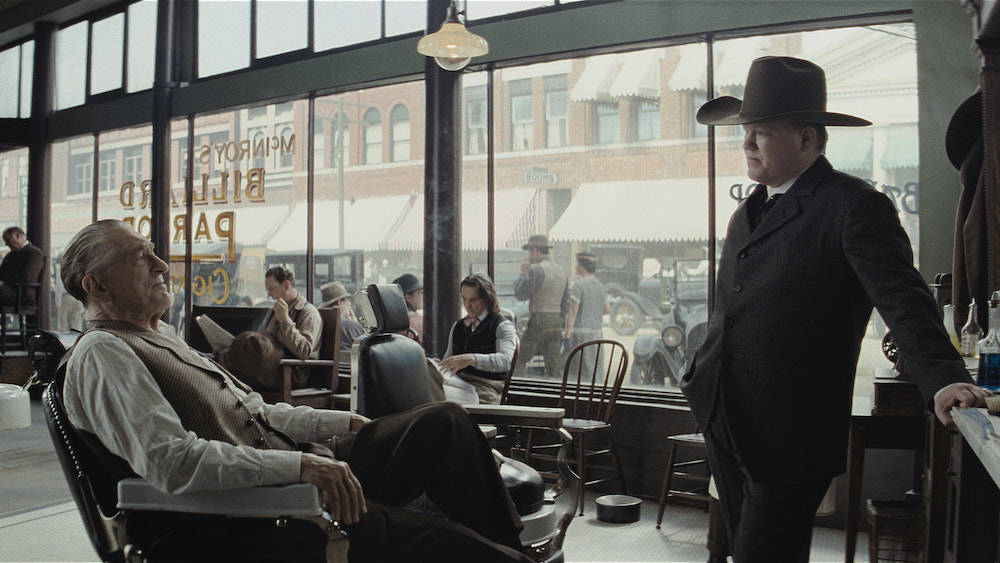
In Martin Scorsese’s latest film, Killers of the Flower Moon, Robert De Niro’s character William Hale tells his nephew Ernest Burkhart (Leonardo DiCaprio), “The Osage are a quiet people. They don’t talk just to talk,” and if Ernest should feel compelled to make noise simply to fill the silence, he should resist.
The director seems to follow that advice in his creative approach to the film’s soundtrack. It’s not quiet, as in silent; it’s a calculated quiet. This isn’t sound for sound’s sake. There’s only sound if it’s communicating something relevant to the story.
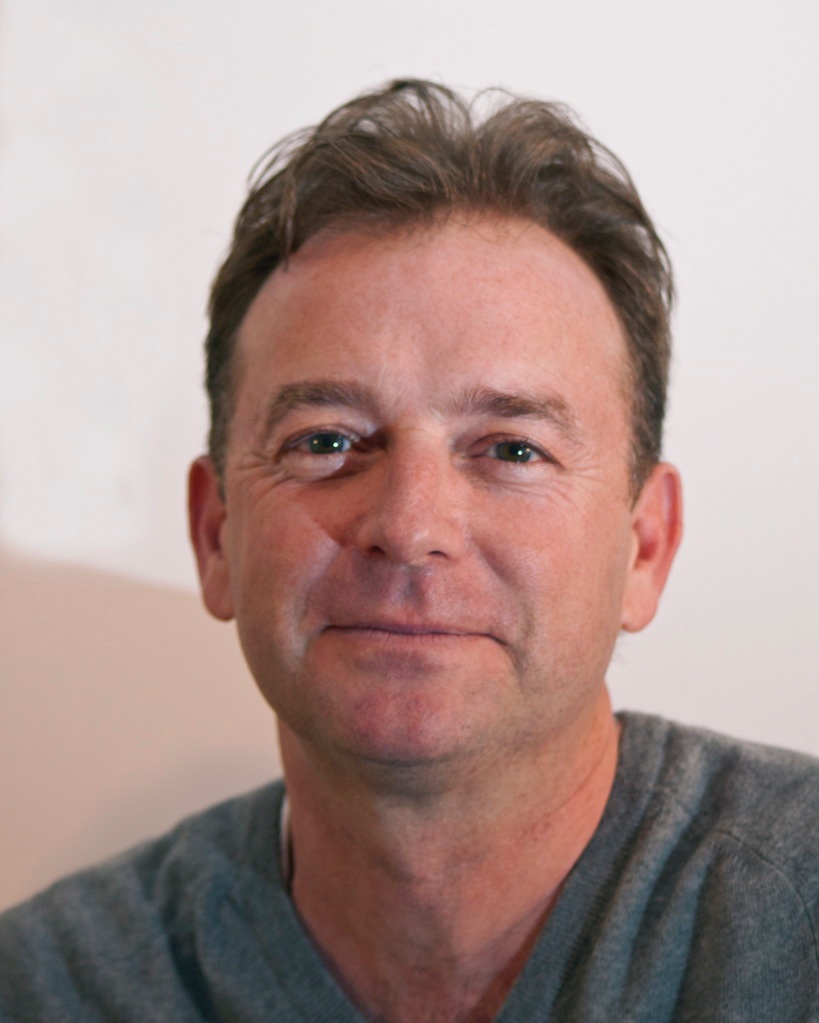
Supervising sound editor/re-recording mixer Eugene Gearty offers an example of Scorsese’s judicious use of sound in Killers of the Flower Moon. “There’s a storm brewing outside, and Ernest goes to shut the window. We see a flash of lightning in the distance. Of course, as an effects editor, you put in a thunder crack. But Marty said, ‘I don’t want to hear that. To me, it’s threatening and that is not what this scene is about.’ That’s a perfect example of using a visual effect to establish something, but not having a sound effect to accompany that visual. In this particular film, it would have been a distraction, or it would have set the mood differently.”
Killers of the Flower Moon—in theaters and soon to be released on Apple TV+—recounts the dozens of murders of Osage Nation members in Oklahoma in the 1920s. The story is primarily told through the complex relationships of three people: prominent landowner/cattle rancher William Hale, his nephew Ernest Burkhart, and Mollie Kyle, a member of an Osage family that possessed oil headrights.
Their dialogue is paramount to the story; not just the words, but also the tonal quality of the actors’ performances, where the inflection and emotion in their deliveries add insight into their characters.
CAPTURING VOCAL CHARACTER
Production sound mixer Mark Ulano’s goal on set was to capture the core tonality of the actors, and he chose mics that best conveyed and revealed each character’s identity. DiCaprio, for instance, was body-miked using a DPA 6061.
“Leonardo plays this character who is coming unhinged and is very amoral,” Ulano explains. “He’s coming back from the war, and so there’s a dialect and tonality to the accent he brings to the Oklahoma environment. His character has this ambivalence about falling in love and having a family, and that’s central to him betraying them and being part of a murder conspiracy for greed. All of that is in his voice. There were times during the mix when I just closed my eyes and could hear that conflict in his voice.”
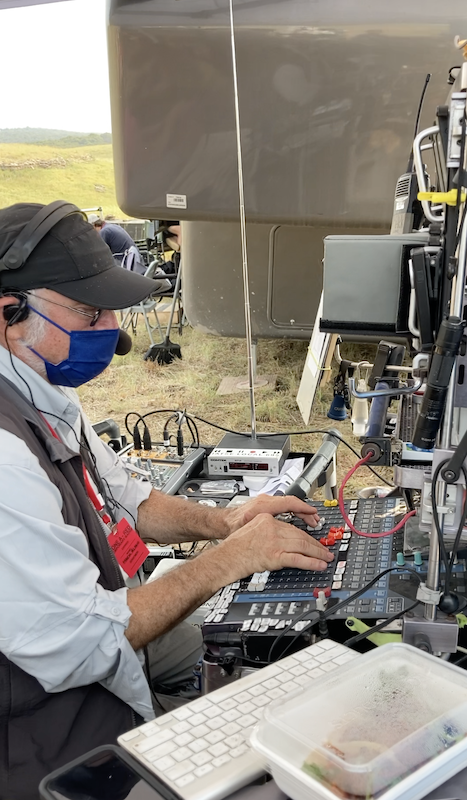
A Sanken CS-3e shotgun served as Ulano’s primary boom microphone, operated by Doug Shamburger. “It allows the boom operator to paint with a great deal of subtlety in terms of its tonality. It’s got unique characteristics. It has no proximity effect,” says Ulano, who used the boom mic as a means of changing perspective. “If we’re inside the mindset of a character, we’re using intimate miking, as if we’re almost in the conversation ourselves.
Other times, it was important to be a fly on the wall—more in the third-person perspective. The mix and the miking would move back and forth, depending on what the shot was about, where it fit in the scene, and where the scene fit with the scenes adjacent.”
For Ulano, the tools for filmmaking, be it mics, cameras, lenses and so on, are there to facilitate creativity and aid in storytelling. “We use all of these tools in service of art, but our best tool is two parts: One is curiosity; never come with a predetermined ideology of how you’re going to do this, but instead have this ‘it depends’ model in your head. Two is adaptability; the truth (the reality of the situation) will guide us to the choices we’re making on the day. We’re filmmakers first, and what we do in the filmmaking collaboration is specific to us as individuals. To be good at this, you have to come from the place of being a filmmaker.”
Though he has nearly 150 film credits, this was Ulano’s first time working with Scorsese and his longtime editor, Thelma Schoonmaker. “While working on Titanic with James Cameron, he said, ‘Don’t give me what I asked for. Give me what I want’” Ulano recalls. “That’s not crazy. He’s delegating the responsibility so that you understand what the idea is, and as his advocate, to use all our powers to be in concert with that idea. What we’re doing is telling stories. We have this storytelling impulse to give and to receive information, for important social reasons. Marty’s plugged into that. His collaboration with the Osage Nation, their leadership, and their community, created a welcoming trust. They knew that their story was to be respected, and they were included in that process—not as lip service, but in an authentic way.”
TELLING THE STORY IN SOUND
Cultivating a feeling of trust is part of Scorsese’s filmmaking process. His collaboration with Schoonmaker goes back to 1967 with Who’s That Knocking at My Door? Re-recording mixer Tom Fleischman, who now calls Soundtrack New York home, joined them in 1982 on The King of Comedy. A decade later, supervising sound editor Eugene Gearty (c5 Sound, New York City) came aboard as a sound effects editor on The Age of Innocence.
“As a filmmaker, Marty’s ideas oftentimes are on a higher level,” Gearty says. “You have to follow and trust in him and know that his ideas for a scene are spot-on. You’re there to help this master filmmaker achieve what he wants.”
In terms of workflow, little has changed throughout the years, Gearty says: “Marty and Thelma will ask for sound effects as they’re editing, and I rarely see more than a scene or two at a time. If they’re not asking for specific sounds while they’re editing, then those elements aren’t as important to them.”
When Gearty does get the final cut for editing, there may be important sounds still missing— for instance, the car sounds in Killers of the Flower Moon. A total of 150 vintage autos were used in the film, 12 of which were principal cars driven by the main characters. So Gearty visited the vehicle supplier in Atlanta and recorded sounds for those 12 cars, using a Sound Devices MixPre-6 II and an M-S stereo shotgun mic. “I spent a full day recording various maneuvers,” he says, “like pull-ins, pull-aways, bys, starts, stops, and onboards at various speeds, plus the tactile sounds of the doors, seats, and so on,”
Don’t Miss Mix Presents Sound For Film: Awards Season 2023!
These recordings were particularly helpful for the scene in which Ernest gives Mollie a ride in his cab for the first time. The set car was being towed, so there was no engine noise; that was added by Gearty in post—but it plays subtly. Although the town behind them is bustling with activity, that doesn’t play in the mix at all. As Gearty explains, “All you hear besides their dialogue is the sound of the car. I recall Thelma saying the focus was on them, and everything else in the world didn’t exist. It’s an interesting concept.”
Sound editing and mix decisions are most often made during the picture edit, where the interplay of music, dialogue, sound effects and imagery is key to how Scorsese and Schoonmaker put a film together. “A lot of the work goes into getting all those balances right, so the automation levels, the balances they established in the cutting room, I use in the mix,” Fleischman explains. “That comes right from Thelma’s Lightworks tracks. Her associate editor, Scott Brock, mixes everything in the editing room. Since it has all been very carefully considered, Thelma is very insistent on preserving all of that. Whatever she had in her track— including the placement and levels of the sound effects Eugene provided— always have to be there. That’s the way we’ve always worked.”
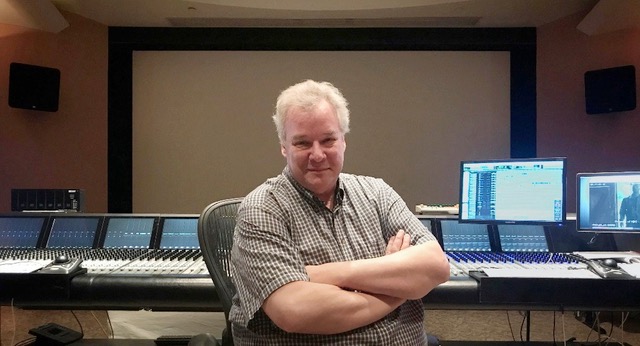
BALANCING DIALOGUE, FX, MUSIC
For Killers of the Flower Moon, nothing could interfere with the dialogue, not even the music. “Robbie Robertson wrote a very simple score, just a few instruments, like drums, electric guitar, slide guitar, harmonica, and some voices,” Fleischman says. “It’s very sparse, but it’s like a heartbeat in the film that runs from scene to scene, driving the emotional tone of what’s going on between these three characters: William Hale, Ernest Burkhart and Mollie.”
One challenging scene for music and dialogue was the car race through town. The loud vintage cars on set marred the production dialogue tracks, and the music transition at the start of the race was complicated. It was also an important scene story-wise, as this was the first meeting between Ernest and Mollie. “Ernest is asking Mollie about where she’s from, and she’s holding her ears because it’s so loud,” Fleischman says. “There’s yelling from people on the street who are watching the race, and the music has this whooping vocal in it.” Gearty adds: “Marty loved that piece of music, and, of course, there’s a line of dialogue that had to be heard. He wants to hear a syllable of this and a note of that. It wasn’t easy, and Tom did an amazing job. It’s amazing to hear.”
Fleischman and Gearty mixed natively in Dolby Atmos on dual Avid S6 consoles at Soundtrack in New York, using three separate Pro Tools systems: one for dialogue and ADR, one for music, and one for effects (premixed by Gearty). Fleischman said it was the longest mix he’s ever done, having started on the dialogue premix right after Labor Day 2022, and then final mixing for eight months, from September 2022 to April 2023, with a 10-day hiatus around the new year.
“After that, I had to prepare the international tracks, and remove all the English dialogue for foreign language dubbing,” he recalls. “That was difficult because Ernest and Mollie continuously switch between Osage and English in their conversations. We put the Osage as an optional stem, but I guess the foreign language actors are going to have to phonetically learn how to speak those lines in Osage. It’s an interesting dilemma for the localization process.”
There is one lovely moment that takes full advantage of the Atmos surround field. Instead of going the traditional route of having end-credit music, Gearty created an immersive prairie atmosphere that changes over time, from morning to afternoon to night. “Atmos beds and object tracks really came into play, but you have to sit through a three-and-a-half-hour movie to hear it,” he laughs. (Author’s Note: Those who did sit through the credits were treated to a beautifully constructed sonic time-lapse.)
Killers of the Flower Moon isn’t a flashy film. Yes, there are jolting moments of violence, gunshots and explosions, but those elements don’t drive this story. The dialogue does, and in particular, the character of the dialogue. “The genius, in my opinion, is that this filmmaker doesn’t have the knee-jerk reaction to use surround sound or the subwoofer just because that’s the modern way of making film sound,” Gearty says in summation.
“In a way, it’s almost like being sagacious as opposed to reacting to what’s happening, technologically-wise. Working with Marty is truly unique. He doesn’t run out and grab something to make his film cooler. It’s more like, ‘What do we need?’ That thinking, that process, is fascinating.”
